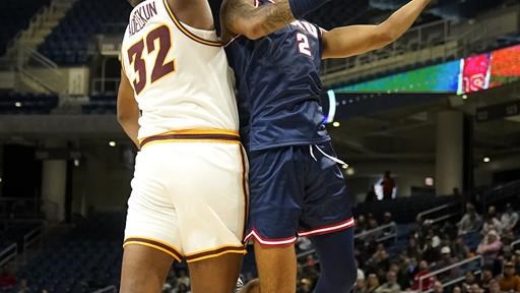:format(webp)/https://www.thestar.com/content/dam/thestar/entertainment/books/2022/12/24/who-dont-we-see-in-childrens-books-disabled-people-just-living-their-lives-heres-why-it-matters/student_in_wheelchair_wearning_mask_reaching_up_to_bookshelf.jpg)
In discussions of books about physically disabled characters in children’s literature, one hears over and over: “Jean Little set the standard, but the frustrating thing is that 60 years later, Jean still sets the standard.” Little’s books continue to be in print, and rightly so, but we need to shine a spotlight on those authors who are following her example.
Little’s novel “Mine for Keeps” (1962) was groundbreaking in its protagonist: a girl with cerebral palsy living a busy life: changing schools, training a dog, making friends. Little, herself visually impaired, wrote her first of more than 50 novels for her physically disabled students who were puzzled by literature where the disabled character was miraculously cured (“Heidi,” “The Secret Garden”) or died. Sixty years later, there are still too few books where the reader can imagine the disabled character growing up, finishing school and living a life with adult responsibilities and relationships.
In both children’s and adult literature, disability stereotypes and tropes continue, even in recent years. One still finds books where the character with cerebral palsy inexplicably dies (CP is a condition that impacts muscle control and coordination, not a death sentence), or the disabled characters live in coddled isolation.
Another problematic example is “Handle With Care,” an adult novel by noted American author Jodi Picoult, in which a family is devastated by a lawsuit over a disabled child. They finally reach some peace and the prospect of a productive life for their daughter. Then the author contrives an ending where the disabled girl walks on a pond’s thin ice and drowns.
Thankfully, representations of disability in Canadian books for young people have increased in recent years. Picture books show more wheelchairs and assistive devices in crowd scenes and, more recently, they include main characters who are disabled. The progress in novels has leaned to invisible disabilities (autism, learning disabilities, mental illness). A 2019 Star survey of diversity in Canadian children’s books published in 2018 found only five books with visibly disabled main characters among the 463 books published for kids and teens. Twenty-three books had invisibly disabled protagonists. Our own look through booklists of the previous few years shows a similar pattern.
In the next year’s survey, looking at 2019, there were 19 books with visibly disabled protagonists (11 of them in picture books) out of 419 books published that year.
But the survey doesn’t measure what types of stories are told. We need stories about physically disabled characters with full lives and productive, interesting futures ahead of them. We need stories showing that disability comes with unique challenges, but it is essential that novels resist the temptation to have disabled people/characters exist to inspire, teach or correct others, or make them cry.
The need for these stories drove me (Christina) to write my own novels for children and teens. “Burning the Boats” and “Zoe’s Extraordinary Holiday Adventures” draw on my disability experience with cerebral palsy. John Lekich used his life with cerebral palsy to create Alex in “The Losers’ Club.” From her own experience of having a club foot, Michelle Kadarusman wrote “The Theory of Hummingbirds” (will Alba’s latest operation allow her to run?). Disability-adjacent writers such as Debby Waldman and Steven Sandor have mined their own or a family member’s experience to create powerful characters: Waldman’s “Addy’s Race” (hearing-impaired Addy discovers cross-country) and Sandor’s “Stick Pick” (paralyzed teen finds sledge hockey).
Some excellent novels are out of print (you’ll be lucky if you can find them in a library, but that’s a topic for another day). Among the Canadian books we mourn are Lekich’s “The Losers’ Club” (Alex and his friends handle a bully, absent parents and a washed-up writer), Heather Waldorf’s “Tripping” (a teen with an artificial leg goes on a two-month camping trip) and Kevin Marc Fournier’s “Sandbag Shuffle” (two preteens, one without legs, steal a boat and float downstream, conning all they meet). No deaths, no “inspiration,” no sense that these kids won’t grow up to be active participants in society, for good or for ill.
What children read shapes their perceptions as adults. Perceptions inform responses to every conversation regarding disability, from accessible infrastructure to employment to right to life. Amid all the progress we are making on diversity, we must stop shelving physical disability as the forgotten diversity portrayed only in set ways. We need to prioritize the voices of disabled authors and the stories of real and living disabled characters making their way in the world.
Reading List
Here are some recent reads with dynamic characters and stories:
“Fast Friends,” written by Heather M. O’Connor, illustrated by Claudia Davila (Scholastic Canada). Tyson, the too-fast kid, correctly sizes up speed-queen Suze, who is non-verbal and uses a wheelchair.
“I Can Too!” written by Karen Autio, illustrated by Laura Watson (Scholastic Canada). Kayla uses adaptive technology to enjoy the same activities as her friend Piper.
“My Ocean is Blue,” written by Darren Lebeuf, illustrated by Ashley Barron (Kids Can Press). A girl who uses crutches goes to the beach and tells us about the flora, the fauna and the beauty of the ocean.
“Meranda and the Legend of the Lake,” by Meagan Mahoney (Owlkids Books). Meranda (who uses crutches) visits her Cape Breton birthplace, where she must solve the mystery of her great-uncle’s death.
“Stand on the Sky,” by Erin Bow (Scholastic Canada). The protagonist in this award-winning book is able-bodied, but her brother, who loses a leg to cancer, is a strong positive personality.
And Jean Little’s “Mine For Keeps” is still popular: a new edition is set to appear in April, 2023 from Puffin Canada.
And for adults…
“Kerfuffle: A Novel That Speaks Spoof to Power” by Dorothy Ellen Palmer (Renaissance Press). Disabled improvisors join able-bodied comrades in a satirical novel set during the 2010 G20 Summit in Toronto.
JOIN THE CONVERSATION


